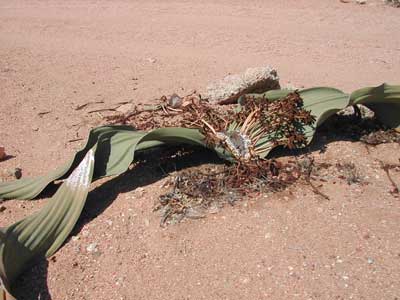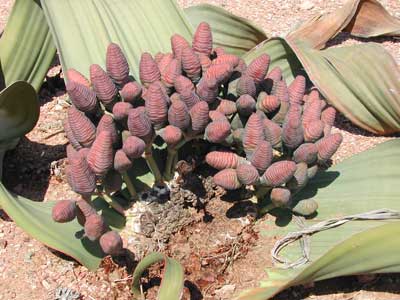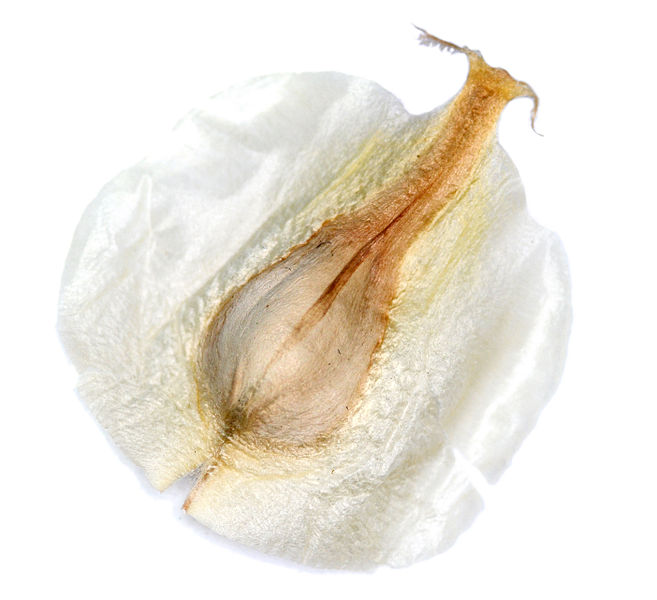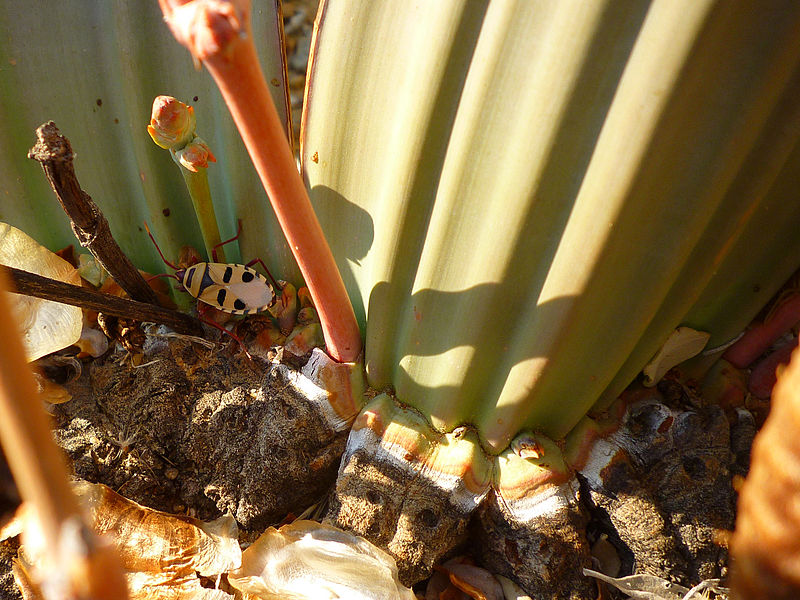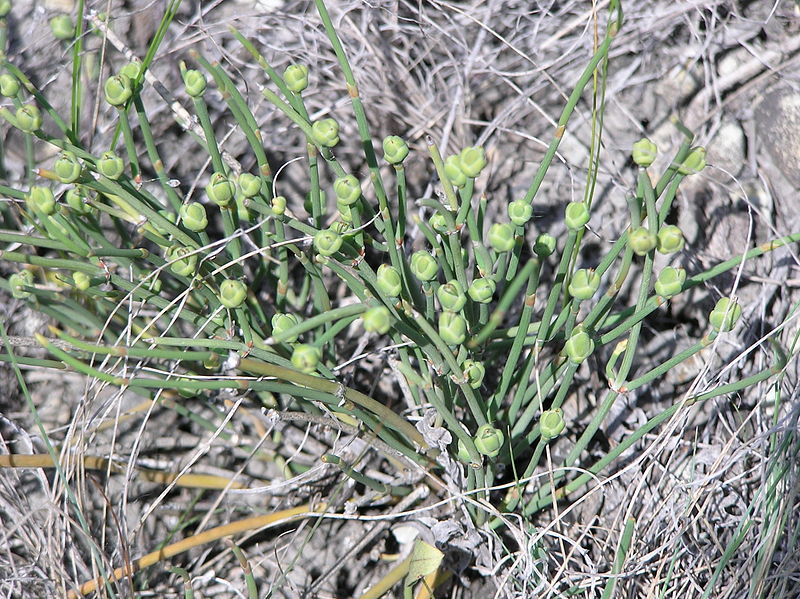Gnetophytes (Class Gnetopsida) are a very perplexing group of plants. Gnetopsida only consist of three genera, which are highly variable in their overall morphology and distribution. Perhaps the strangest plant on the planet is the welwitschia (Welwitschia mirabilis). It is considered a living fossil with a very strange growth habit. Following germination, the two cotyledons (seed leaves) give rise to two true leaves. Those leaves continue to grow throughout the life of the plant reaching upwards of 6 meters, and no new leaves are produced.
Unlike all other gymnosperms, gnetophytes have vessel elements. Vessel elements are vascular tissue that are much more efficient at transporting water than tracheids. While all vascular plants have tracheids, only gnetophytes and flowering plants (Angiosperms) have vessel elements. This similarity in morphology led early botanists to assume that flowering plants are all descendants of gnetophytes. Also similar to flowering plants, some species of gnetophytes (i.e. welwitschia) are pollinated by insects attracted to nectar in the male and female strobili. All other gymnosperms are wind-pollinated. However, modern genetic analysis suggests that gnetophytes are not closely related to angiosperms, regardless of these morphological and ecological relationships.
